Fokker D.XXIII
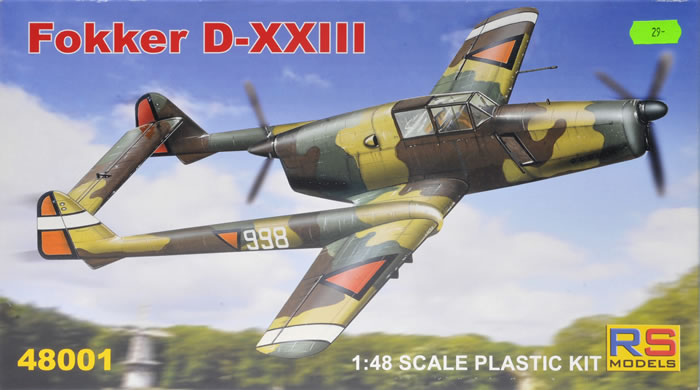
RS Models, 1/48 scale
Reviewed by Brett Green

RS Models ' 1/48 scale Fokker D.XXIII is available online from Squadron.com
The Fokker D.XXIII was a Dutch single-seat fighter designed and built by Fokker. Only one aircraft was flown before the country was invaded by the Germans in May 1940.
The Fokker D.XXIII was designed as a twin-engined single-seat aircraft. To overcome the problems of asymmetric flight it had a tractor engine at the front and a pusher engine at the rear. The D.XXIII was a cantilever monoplane with the twin tail units on booms. The pilot had an enclosed cockpit in between the tractor and pusher engines and it had a retractable tricycle landing gear.
The prototype first flew on 30 May 1939 powered by two Walter Sagitta I-SR air cooled vee piston engines.
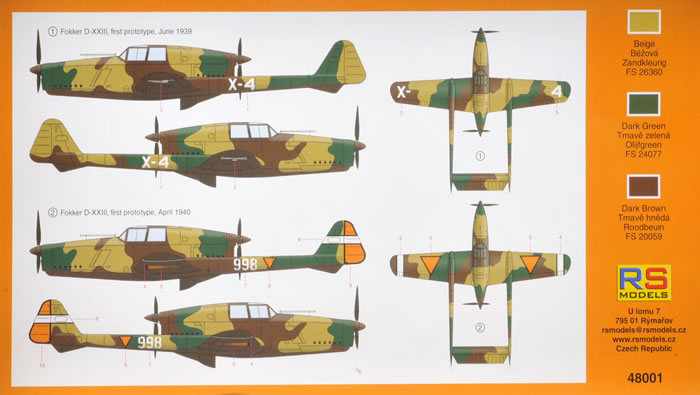
The trial flights identified problems with the cooling of the rear engine and general engine performance. It was proposed to use Rolls-Royce or Daimler-Benz engines in the production aircraft. Concerns were also raised about the pilot clearing the rear propeller if he had to bail out and an ejector seat was studied. As a provisional solution, rails were put on both sides of the forward fuselage for the Fokker test pilot, Gerben Sonderman, to use to bail out in an emergency.
The aircraft was flown 11 times for a total flight time of less than four hours. The rear fuselage paneling was modified significantly before the last few flights in an attempt to address chronic rear engine cooling problems.
On the 11th flight in April, the undercarriage was damaged, and the programme was abandoned in May 1940 when the German forces invaded the Netherlands. *
RS Models has branched out into 1/48 scale, and their first subject is the push-me-pull-you Fokker D.XXIII.
The kit comprises 83 parts in medium grey plastic, seven parts in clear plastic, one photo-etched fret and one decal sheet covering two schemes on the prototype.
The plastic is typical of Czech limited run kits today - a nice smooth satin finish. The sprue connectors are not particularly big but there are quite a few of them, and flash is present on some of the smaller parts, so careful cleanup will be necessary before assembly.
Surface detail is very restrained, with extremely fine recessed panel lines and truly tiny rivets (which I only saw on screen after I had viewed my photos) on the fuselage and smooth wings. The fabric control surfaces echo this understated approach with subtle raised strips representing fabric ribs.
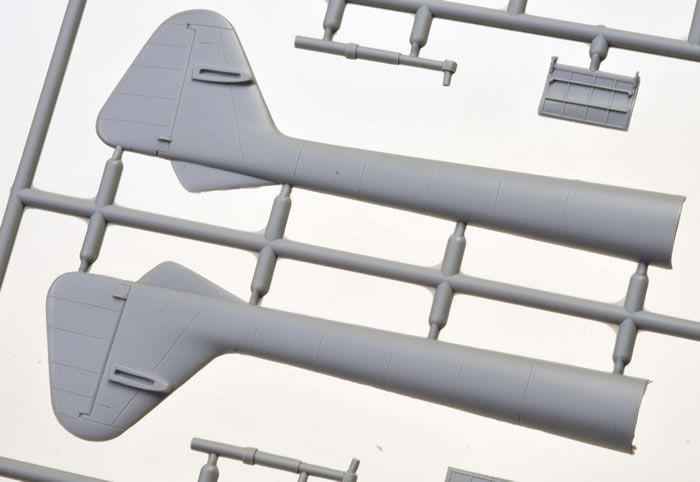
A basic cockpit is supplied with sidewalls, a floor, rear bulkhead and seat with photo-etched harness straps. Behind the pilot, parts are included for the top of the fuel tank and (I assume) the radio.
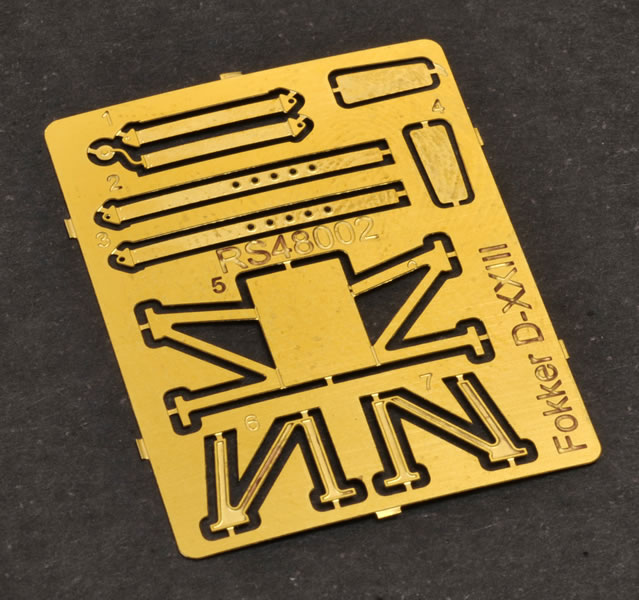
As you would expect in a limited run kit, there are no locating pins or tabs. With this aircraft featuring twin booms, you'll need to take extra time and care with test-fitting to assure perfect alignment before committing to glue.
All control surfaces are moulded to the wing and tail parts in neutral positions, and the basic landing gear bays are moulded as part of the lower wing halves.
Clear parts are a one-piece canopy moulded in the closed position, and six navigation lights for the vertical tails.
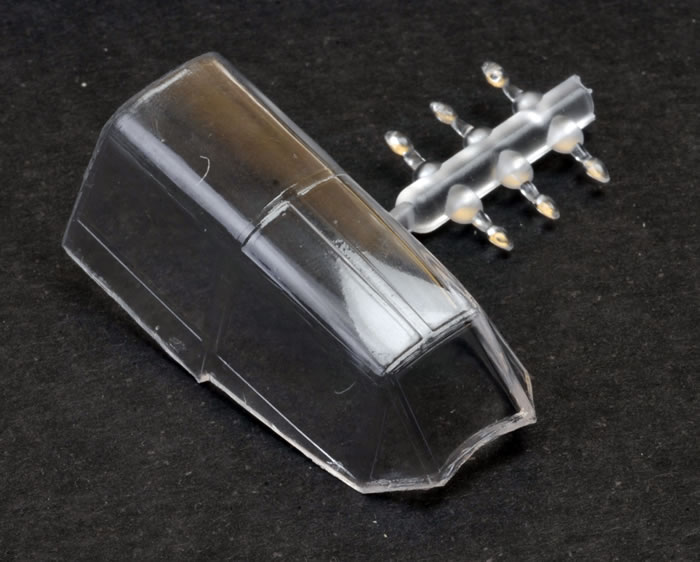
The decal sheet is well printed, offering markings for the sole prototype at two stages of its flight testing.
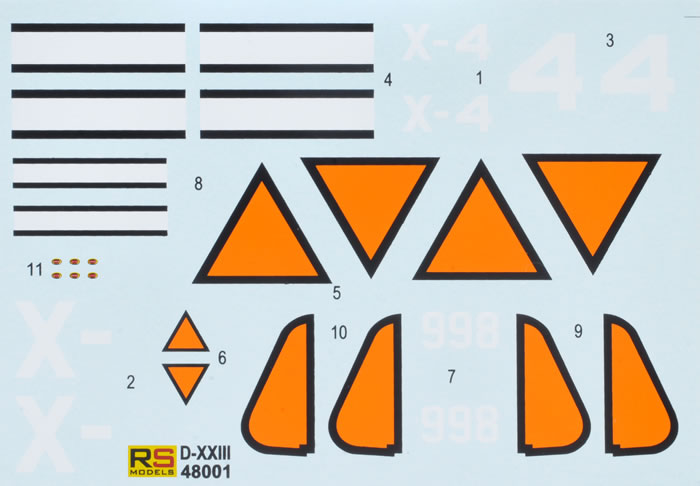
Markings are supplied for the wing stripes and propeller logos as well s Dutch national markings and serial numbers.
There is still a place in the world for limited run injection moulded kits, especially where they allow fascinating one-off subjects like the Fokker D.XXIII to see the light of day in 1/48 scale.
Surface detail is very fine and detail quite respectable.
Dont't let the relatively small number of parts and classy sprues mislead you though. You'll have to live without little luxuries like locating pins and tabs, and take a bit more time preparing and test-fitting parts so experience will be helpful, but at the end of the day you'll have a 1/48 scale Fokker D.XXIII.
Recommended to modellers with limited run kit experience and Dutch aircraft fans.
* background information courtesy of Wikipedia http://en.wikipedia.org/wiki/Fokker_D.XXIII
Thanks to RS Models for the sample
Review Text and Images Copyright © 2014 by Brett Green
Page Created 23 December, 2014
Last updated
23 December, 2014
Back to HyperScale Main Page
Back to Reviews Page

|
Home
| What's New |
Features |
Gallery |
Reviews |
Reference |
Forum |
Search